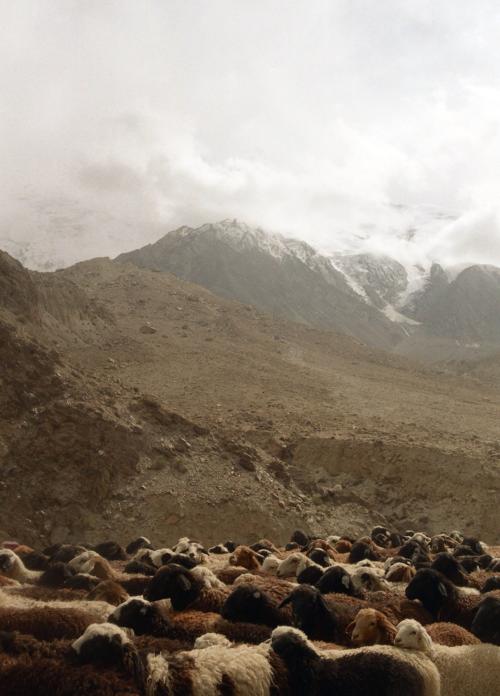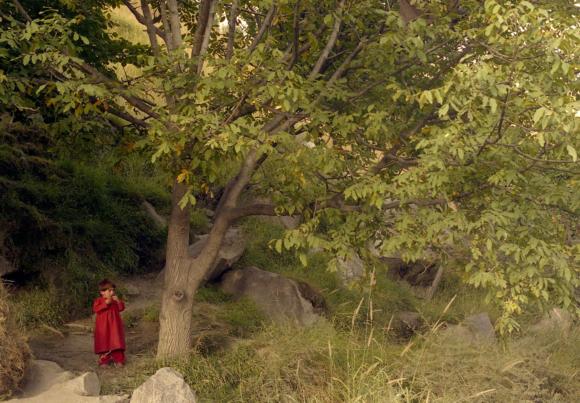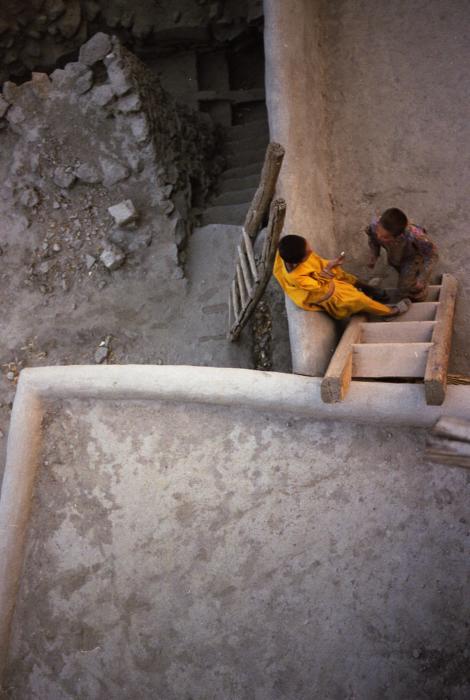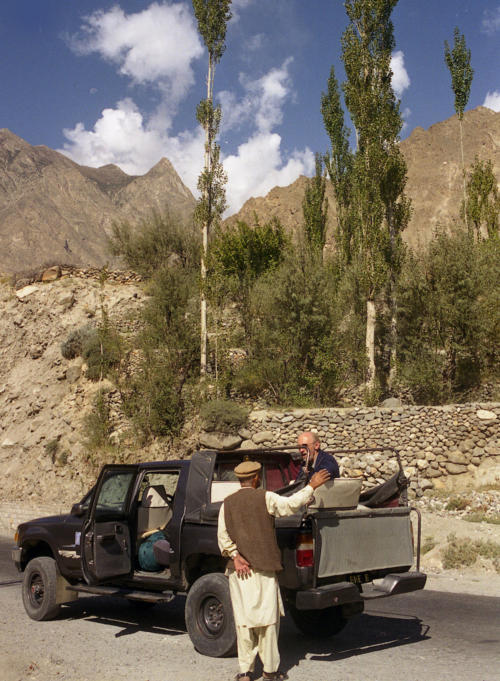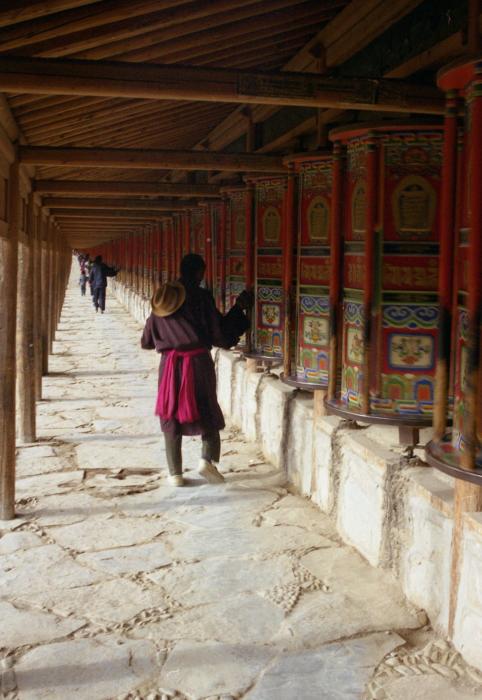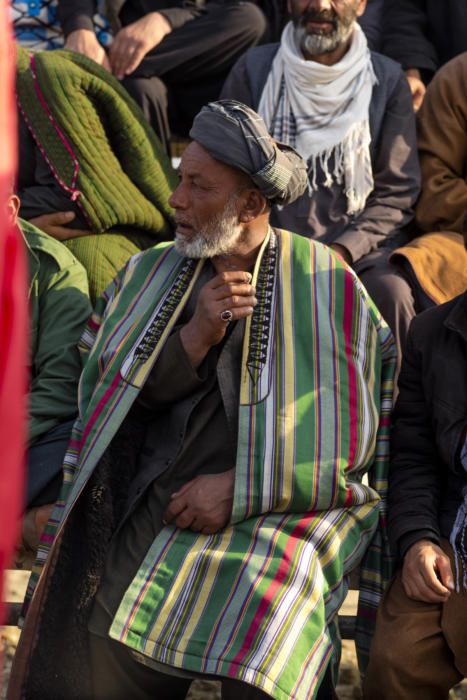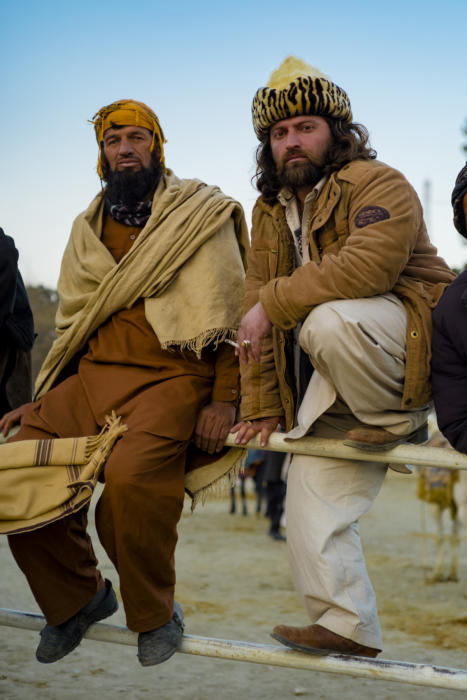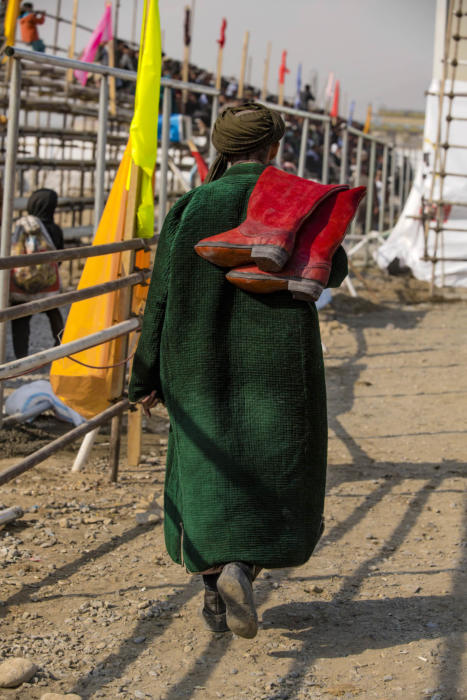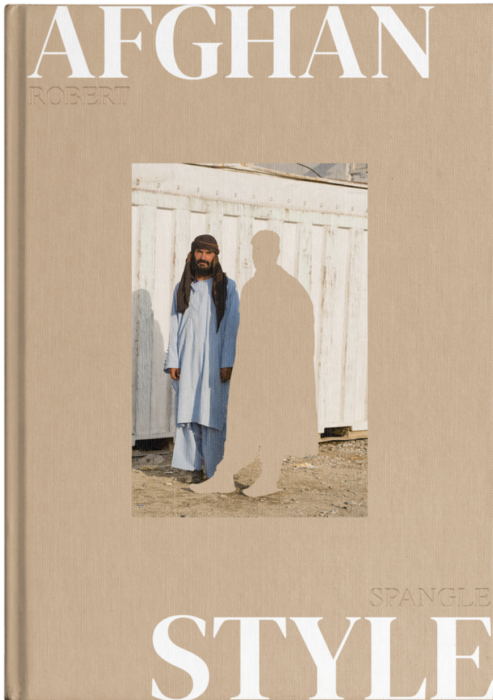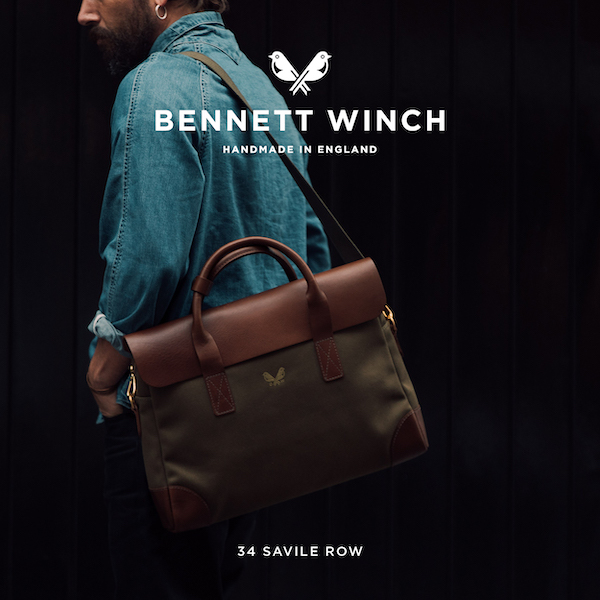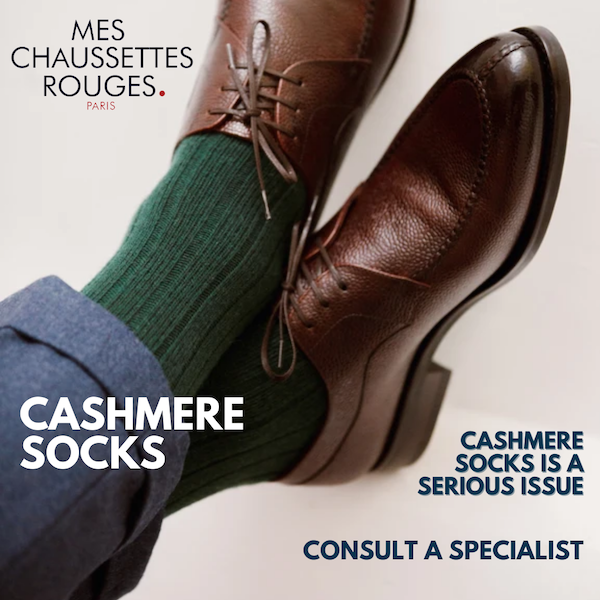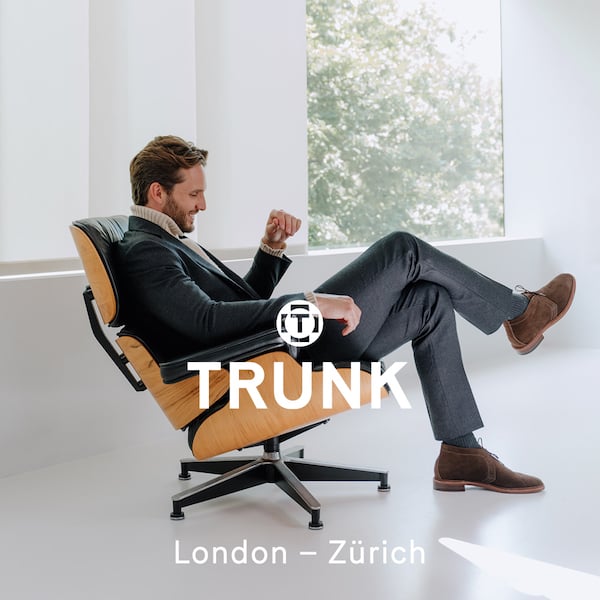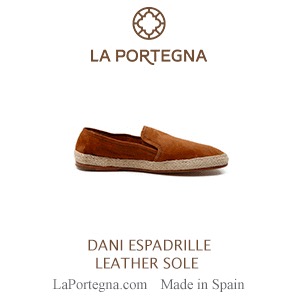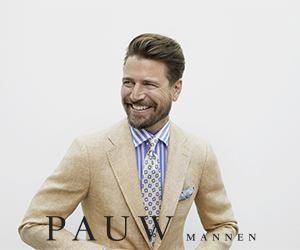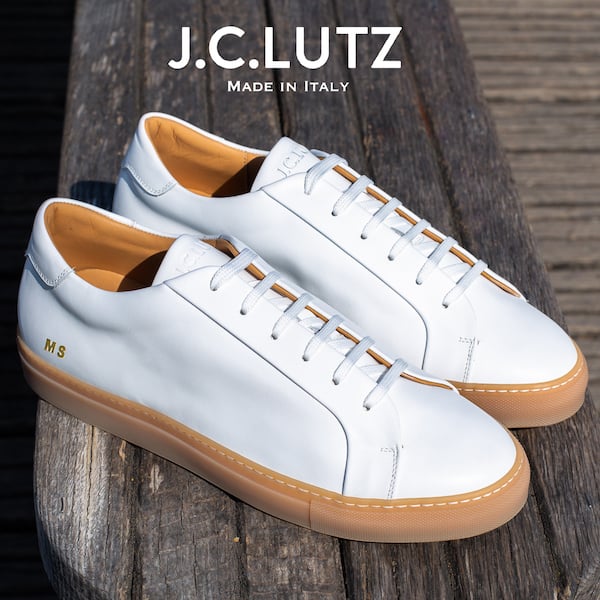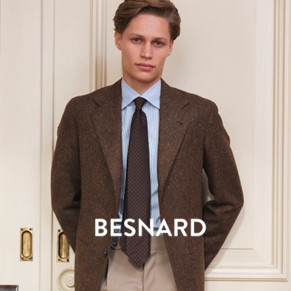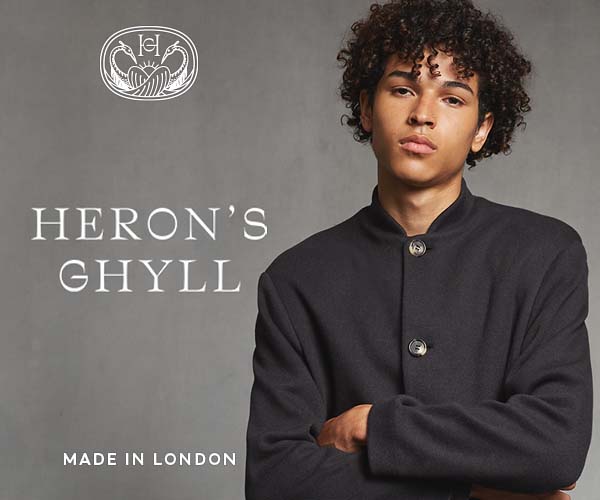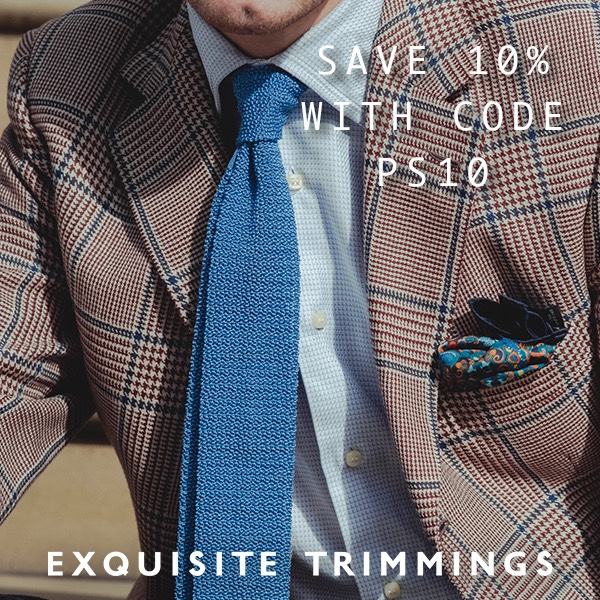Celebrating local dress: My travels and Afghan Style
During the launch of Robert Spangle's book Afghan Style recently in London, I had a chance to catch up with Rob about what he found so inspirational about dress in Afghanistan.
He mentioned the silhouettes, the texture of different local materials and colour variation - how expressive each seemed, within often fairly limited styles.
It brought back memories of my own travels in northern Pakistan and western China, both close neighbours of areas Rob had been. I backpacked a lot in my twenties, and one particularly memorable trip took me from Beijing to Islamabad, travelling by land across the north of China via Urumqi, then down into Pakistan over the Karakoram.
I travelled with my father, and remember it fondly. It's easily the longest time the two of us have spent together on our own. But my strongest memories are of the people we met, who were unfailingly friendly and hospitable, particularly in Pakistan.
Looking back on it now, they were also well dressed - expressively and individually.
Unlike many people working in menswear, I have no good 'origin story'. It is a disappointment to every interviewer.
I wasn't inspired by a father or grandfather. I didn't insist on wearing a three-piece suit to school. I didn't care about clothes until suits were a requirement of working in an office.
So travelling around Asia back then, the clothes largely passed me by. We would see Pakistani men all wearing their own interpretations of the shalwad kameez, in different shades, with different accessories, with or without a rolled pakol cap, and it would be no more interesting to me than the landscape or architecture.
Looking back on some of my photos though (above and below), I was clearly struck at some level by the colours in the clothing.
Children were always the brightest and most varied. Families couldn’t afford embroidered or printed fabrics, but they could dye them bold colours - reds, yellows and greens.
Among the stone houses and dun-coloured hills, these blocks of colour stood out like gems.
Men were more traditionally and plainly dressed in the north of Pakistan, where most of these photos were taken, than down in Islamabad or Rawalpindi. But I loved the tonal combinations - a dirty cream shalwar kameez, a dark-brown woollen waistcoat, an earth-coloured pakol. They were earthy, practical and cool.
That’s one very gentleman below, arguing with my father about something or other. I think those loose woollen waistcoats must have stayed in my subconscious somewhere, because I immediately thought of them when I wrote about a Connolly cardigan here last year.
I don’t think it’s too much of a stretch to see inspiration from these kinds of clothing in brands we know and love, particularly given how influenced I know Agyesh at Stoffa is by India, and Adam at Adret also is by his travels.
The other colour that comes back to me strongly is that worn by the monks at Labrang in China.
Although theoretically dressed in a uniform of maroon with occasional punch of a yellow hat, in practice the robes varied between individuals, perhaps due to different dyes and ages of the garments.
The result was that you saw every shade of red, purple and pink, often mixed together in the same outfit: red robes, purple cloak, pink sash. Again, although clothes were not the obsession they are for me now, I liked these colours enough to buy my own asymmetric jacket in a rough local wool.
The point I would take from this (and one of the many I take from Rob’s book) is that it’s easy to focus on the compact swirl of international fashion - packaged for us by the echo chamber of social media - at the expense of rich local traditions.
I always want more writing in books like Afghan Style. I’m just quite a literary, word-driven person. But Rob does include some nice observations, such as the way modern additions to traditional clothing in Afghanistan indicate a person’s age or allegiances.
A tailored jacket dates a man to the Russian occupation, when such western clothing was first introduced. A military jacket, or more likely vest, suggests an involvement with the Taliban and more recent conflicts. The adoption of a particular striped chapan shows the influence of ex-President Hamid Karzai (eg below).
I find this fascinating, and it makes me want to pick up similar regional nuances - perhaps comparing older men in different European cities, or spotting the appearances of traditional clothing in Japan, where I’ll be travelling soon.
Afghan Style (shots above and below) is a great insight into that, and I’d certainly recommend it.
The photography is great - many leagues, of course, above my blurry snaps - but the real fascination for me is the people Rob picked, why he did so, and thinking about that by either analysing the image or reading the captions.
I like, too, the fact that Rob divides the book up into sections entitled texture, silhouette and colour - even when he’s shooting villagers in a remote corner of Afghanistan, he’s always thinking menswear.
Afghan Style is available online from www.ObserverCollection.com for the US/worldwide, and www.editionsodyssee.com in the EU
It is also available in the following stores:
- Trunk (UK)
- Picto La Comete
- Actes Sud (Arles)
- La Nouvelle Chambre Claire (Paris)
- Filigranes (Paris)
- 7l Settelile (Paris)
- La Pharmacie des Ames (Paris)
- Mendo (Amsterdam)
There's a nice interview with Rob about the book on Agnes Select here
Related posts
from Permanent Style https://ift.tt/YfStk9q
via IFTTT
